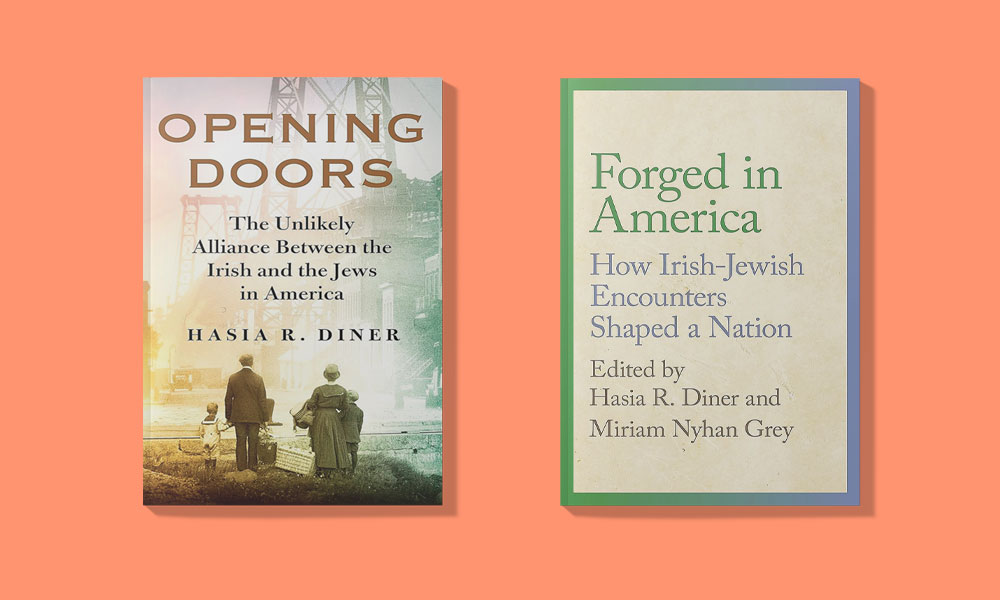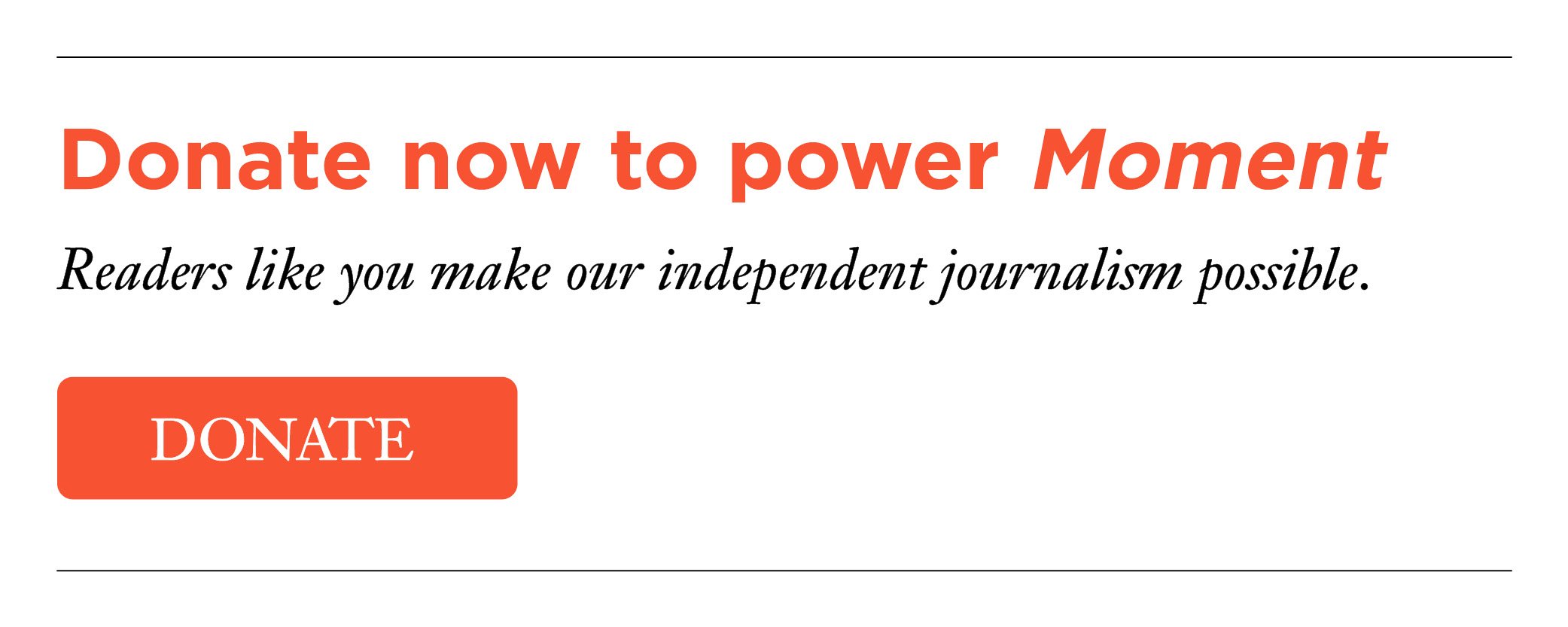
Opening Doors: The Unlikely Alliance Between the Irish and the Jews in America
By Hasia R. Diner
St. Martin’s Press, 288 pp.
Forged in America: How Irish-Jewish Encounters Shaped a Nation
Edited by Hasia R. Diner and Miriam Nyhan Grey
New York University Press, 288 pp.
The two million Eastern European Jews who migrated to the United States between 1870 and the outbreak of World War I had been preceded by smaller movements of Jews to America: in colonial times, hundreds of Sephardim who fled Inquisitions; later, tens of thousands of Central European, mostly German, Jews who came, saw and prospered phenomenally in the middle of the 19th century. That history makes it tempting to view the experiences of the multitudinous Yiddish speakers who disembarked at Ellis Island as simply part of a pageant of American Jewish history culminating in the later arrival of refugees from Nazism and then the Soviet Union.
The sociologist Hasia Diner’s perspective is an important corrective to that view, assigning great importance to the relationship Eastern European immigrant Jews developed in America with an immigrant population that was not Jewish: the more numerous, more settled and more politically savvy Irish. Two new books—one by Diner herself and one a collection of essays edited by her and historian Miriam Nyhan Grey—tell a rich story of a varied and highly transactional communal relationship.
When the Jews were just getting off the boat (much of what she writes about transpired in New York City), the Irish had lived in the tenements of America’s cities for decades. Unlike the Jews, they had arrived fluent in English and, with astonishing speed, had become virtually synonymous with the police force. They had also mastered the art of retail urban politics known as ward heeling: In exchange for votes, there was help for Jewish shopkeepers negotiating the mysteries of municipal government conducted in English, and possibly a break in court in the event of trouble. This kind of interaction did not preclude the unpleasantness of Irish street gangs preying on Jews in the neighborhoods they shared. But it paid off well in politics at both local and international levels.
Diner and Terry Golway (in his contribution to Forged in America) both cite the historian Steven Erie’s line about the relationship between the Irish-dominated Manhattan Democratic machine, Tammany Hall, and Jewish immigrants and subsequent generations born in America: The Jews were “Tammany’s Chosen People.” It wasn’t just that Jews overcame their flirtations with socialists and Republican reformers to return Irish candidates to power. Or that Tammany and other Irish machines were ultimately obliged to nominate Jews for public office. Or that the troika of intimate advisers to New York Governor Al Smith, a Tammany product and the first Catholic to be nominated for president by a major party, were Belle Moskowitz, Joseph Proskauer and Robert Moses, all Jews. Beyond the pragmatic benefits of their alliance, a profound empathy existed between the two peoples.
The Irish fought against restrictive immigration laws (a fight they ultimately lost in the 1920s). Near the end of the 19th century, Irish commentators defended Alfred Dreyfus, the Jewish French Army officer framed for treason. During the 1913 Russian blood libel trial of Mendel Beilis, accused of murdering a Christian child, Irish-American clergy and laity attended rallies against the trial.
A big pro-Beilis rally in Chicago received a telegram from the Irish-American governor of Illinois, Edward Dunne, who dismissed anyone who believed in the blood libel as “a malignant person or a gullible fool.”
Shortly before that, in 1903, when Jews in the then Russian-controlled city of Kishinev (now Chisinau, Moldova) were subjected to a horrific pogrom, Jewish leaders recruited the Irish nationalist and journalist Michael Davitt to go to Kishinev and write up what had happened. His reporting, Within the Pale: The True Story of Anti-Semitic Persecution in Russia, exposed the brutality of Kishinev in both the British and American press. Jews had understood that his vivid accounts of murder and rape would be more credible coming from a gentile reporter presumed innocent of self-pleading.
Incidentally, Diner credits Davitt’s work with popularizing two previously obscure words in the English language. One was the Russian word “pogrom.” The other was the use of “pale” as in “Pale of Settlement.” While the phrase applied to the western Russian provinces where most Jews were obliged to live, it resonated with Irish readers, since the origin of that usage was a patch of land in Ireland called a pale (there was a pale in Calais, too) marking the zone of English control. A pale was a wooden stake marking a border (on which one might be ‘impaled’). It’s hard to imagine an etymology more redolent of the tyranny of cruel overlords for both peoples.
In the Jews, the Irish saw some traits of natural political allies, along with an absence of the kind of obstacles that had popped up with other immigrant groups. Not being Christian, the Jews had little interest in the primacy of Protestantism in the American republic. Not being Catholic, they did not have issues with the American Roman Catholic Church, dominated by the Irish, over languages to be used or saints to be venerated. A huge number of Jewish immigrants, both men and women, worked in the needle trades, which meant that the men were not competing for jobs with Irish men, who were more likely to work in construction.
Both peoples possessed a tragic sense when it came to their apparently lost homeland, and both saw in the United States a new and permanent home. By way of contrast, Golway writes that among Italians who immigrated during the Ellis Island era “about half…came to America as ‘birds of passage,’ migrating with the intention of returning after four or five years’ work.” Jews were more likely to bring their families and to seek naturalization and with it, for the men at least, the right to vote.
The connections between Irish and Jewish women in the labor movement are among the most interesting and moving that Diner relates. Irish labor organizers—especially women—coached Jewish workers into organizing their shops for the Amalgamated Clothing Workers and the International Ladies’ Garment Workers’ Union.
A different kind of partnership unfolded in the classroom. From the late 19th century on, generations of Jewish students (in public schools—Jews never created a parochial education system comparable to the city’s Catholic schools) were taught to be English-speaking Americans by Irish teachers, who were often the daughters of working-class or immigrant mothers who had learned proper manners and American ways working as domestics in New York’s wealthiest households. These teachers may have been born to the tenements themselves, but to Jewish immigrant kids just learning to speak English, they personified America. Diner cites an interview from the 1980s with a daughter of immigrants who had spent decades as a public school teacher in New York City.
Her own Irish-American teachers, she recalled, would invite her to their homes and coach her and her Jewish classmates “who drank tea from a glass at home… to lift our pinkies like our teachers while sipping from the delicate china.”
In higher education, too, there was a special relationship. Fordham and St. John’s Universities were havens for Jewish students (especially law students) whose Jewishness made them undesirable at more prestigious institutions. There’s also an essay in Forged in America by Jeffrey Gurock about the Jewish players who made St. John’s a basketball powerhouse in the 1920s.
There are moments when Forged in America strains to connect with its theme of the Irish-Jewish relationship. Hannah Zave-Greene’s fascinating essay on the parallel careers of Lilian Wald in public health and Margaret Sanger (born Margaret Higgins) in family planning reminds us of how remarkable those women were, but their ethnic backgrounds don’t play a big role: It could be about two Irish women, two Jews or for that matter two Presbyterians.
But then there was the ultimate confirmation that something special was in the wind in tenements of early 20th-century America: the preoccupation of songwriters, novelists and playwrights with Irish-Jewish romance, most famously the huge Broadway success of Abie’s Irish Rose in the 1920s.
Nothing lasts forever. The Irish-Jewish partnership was frayed in the 1930s over such issues as Communist influence in the labor movement and the antisemitism of Father Coughlin, the notorious radio priest, and later by the rise of urban reform groups that broke the power of the old Irish-led machines. But the history of this relationship shows that the shrewd political behavior of immigrant minorities can, in fact, change the country. The Irish and the Jews helped disestablish white Protestants from their domination of American political life. That evolution made us a different country, a more democratic (and Democratic) country and, despite political machines of less than Madisonian standards, a fairer and better country all told.
Robert Siegel is Moment’s special literary correspondent.
Moment Magazine participates in the Amazon Associates program and earns money from qualifying purchases.


